MOD REQIRED!!!
CONTROLS AT BOTTOM
Thanks to Blazeinfinity for the realistic looking turrents
Controls turning Roll trottle for speed AG1 for turrent elv and rotation note was unable to fix the wobble
Just Chillin
AAguns Fireing
history warning its long
The second USS Worcester (CL-144) was laid down on 29 January 1945 at Camden, New Jersey, by the New York Shipbuilding and Drydock Corp.; launched on 4 February 1947; sponsored by Gloria Ann Sullivan, the daughter of Mayor F. G. Sullivan of Worcester, Massachusetts; and commissioned at the Philadelphia Naval Shipyard on 26 June 1948, Capt. T. B. Dugan in command.
Combining destroyer maneuverability with cruiser size and given a main battery that could deal not only with surface targets but with aircraft as well, Worcester embodied many of the lessons learned during World War II; she and her sister ship Roanoke epitomized the hard-hitting dual-purpose cruiser. However the design is largely considered a failure, as the main armament of twin automatic 6-inch (152 mm) guns never achieved fire rates of more 9-10 rpm which was lower than the similar design of automatic 8-inch (203 mm) guns on the USS Newport News. Also the fire control fitted to the Worcester was optimised for anti aircraft fire rather than surface action or GFS and the Royal Navy 6 inch gun cruisers HMS Belfast and HMS Jamaica actually performed much better in GFS in the Korean War, the HMS Belfast's firepower being very useful in the Inchon landing and the US Navy view being central to the British decision to refit the Belfast in 1955. Worcester and Roanoke seemed to offer little more than the post- war group 3 Juneau-class light cruisers on 40% of the displacement, the USS Juneau (CL-119) as refitted in 1951 with 6 twin Mk 38 5-inch (127 mm) guns and 12 50 calibre 3-inch (76 mm) guns on 6000 ton displacement seeming a better answer.
Worcester was named after two previous ships of that name, honoring Worcester, Massachusetts.
Worcester, assigned to Cruiser Division (CruDiv) 10, spent the first year of her commissioned service completing her fitting out, conducting shakedown training off the eastern seaboard of the United States, and undergoing availability and type training. In the summer of 1949, she participated in her first large-scale training exercises in Guantanamo Bay and visited Kingston, Jamaica. Late in the summer, she sailed for the Mediterranean, departing Newport, Rhode Island, on 6 September 1949 and reaching Gibraltar 10 days later. She made her first deployment with the 6th Fleet in the ensuing months, visiting Malta; Bizerte, Tunisia; Golfe-Juan, France; Argostoli and Phaleron Bay, Greece; Iskenderum, Turkey; Trieste and Venice, Italy; and Gibraltar. During that 6th Fleet deployment, she engaged in exercises and maneuvers with fast carrier task forces, including the carrier Leyte (CV-32) and the heavy cruiser Des Moines (CA-134). She returned to Norfolk on 10 December.
Worcester operated off the eastern seaboard, ranging from Newport to Norfolk and south to Puerto Rico, with visits in between to Philadelphia, before she began her second 6th Fleet deployment in the spring of 1950. She departed Norfolk on 3 May, arrived at Lisbon on the 13th, and entered the Mediterranean soon thereafter.
USS Worcester underway in the Mediterranean Sea, 1953.
In between her cycles of drills and exercises in the "Med," Worcester visited Augusta, Sicily; Bizerte; Genoa and La Spezia, Italy; and Golfe Juan, on the southern coast of France, before she put into Phaleron Bay on 20 July. However, she was there only a week before she received orders to sail for the Far East. While the light cruiser and her consorts had been operating in the Mediterranean, war had broken out in Korea on 25 June. Accordingly, Worcester departed Phaleron Bay on 27 July, in company with Destroyer Division (DesDiv) 21—Fred T. Berry (DDE-858), Keppler (DDE-765), Norris (DDE-959), and McCaffrey (DDE-860). Reaching Port Said, Egypt, on the morning of the 29th, Worcester transited the Suez Canal that afternoon.
Reaching Colombo for provisions and fuel, Worcester and her escorts tarried there from 7 August to 9 August before pushing on toward the Malacca Strait. They then proceeded through the Bashi Channel to Buckner Bay, Okinawa, where they arrived on 19 August. En route, the American warships had been diverted through the Bashi Channel to be available to counter any invasion attempt by the communist Chinese of Formosa.
After fueling from Navasota (AO-106), Worcester departed Buckner Bay on the 20th and set a course for Keelung, Formosa, to join the Formosa Patrol.
Joining that force on the 21st, Worcester remained at anchor at Keelung from the 22d through the 26th. She got underway on the 27th to add her potentially powerful antiaircraft "punch" to the screen of Task Force (TF) 77—the fast carrier task force consisting of Philippine Sea (CV-47) and Valley Forge (CV-45), then operating in the Yellow Sea off the coast of Korea.
The following day, the light cruiser—steaming in company with Norris (DDE-859)—joined TF 77 and proceeded into the Yellow Sea for operations against enemy targets located in central and southwestern Korea. Each day in ensuing days, the carriers launched their strikes against North Korean ground targets while the screen provided protection in case of any attempts by the communist North Korean air forces to interrupt the operation. Her helicopter also performed plane-guard duty, standing by in the air to rescue any ditched pilots from the waters nearby.
On 4 September, Worcester's radar picked up an unidentified contact at 1331. The combat air patrol—four Vought F4U Corsairs from Valley Forge—soon reported the stranger as being a twin-engined bomber with a pointed nose, a single tailfin, and high inverted gull wings. It also bore red star markings. At 1345, the F4U's vectored to the "bogey" by Fletcher (DDE-445), unceremoniously splashed the stranger 49 miles away.
The following day, Worcester went to general quarters at 1108 and commenced maneuvering at 20 knots to avoid possible attack when her radar picked up an unidentified plane closing the formation from the east. Three minutes later, the cruiser fired three rounds of 6 inch projectiles in the direction of the intruder to warn her—it turned out to be a British Short Sunderland flying boat on patrol. At 2143, Worcester secured from battle stations and resumed her cruising with TF 77.
There was one more day of flight operations off the Korean coast, 6 September, before Worcester transferred her helicopter to Philippine Sea to clear the ship for a practice antiaircraft firing. The cruiser later recovered the "chopper" before heading for Sasebo, Japan, for replenishment of fuel, ammunition, stores, and provisions.
Worcester remained at Sasebo from 7 September to 10 September and got underway at 0532 on 11 September, again with TF 77, and proceeded to the operation area in the Yellow Sea to support a large-scale amphibious assault by United Nations (UN) forces against enemy forces in the Inchon and Seoul areas of Korea.
Worcester subsequently supported the Inchon landing —the daring stroke aimed at outflanking the North Korean invaders by a strategic landing behind their lines in South Korea masterminded by General Douglas MacArthur. Worcester screened the fast carrier task forces as their planes dropped lethal loads on North Korean targets ashore until she was detached on the 20th to conduct a shore bombardment mission as part of TG 95.2 in the vicinity of Pohang Dong. Proceeding to the objective via the straits north of the Quelpart Islands and west of Tsushima, the light cruiser rendezvoused with Helena (CA-75) three miles off the east coast of Korea and 12 miles north of Pohang Dong.
Over the ensuing days, Worcester patrolled off the coast with TG 95.2. She relieved Helena in her fire support duties at 0600 on the 24th, freeing the heavy cruiser to proceed to Sasebo. While her own helicopter was aloft providing antisubmarine screening, Worcester commenced firing at 0805, shelling nine North Korean troop concentrations ashore. Directed by Korean Military Advisory Group (KMAG) personnel ashore, Worcester delivered call-fire throughout the day with pinpoint accuracy at troop concentrations and command posts. Relieved by Samuel N. Moore (DD-747) as fire support ship, Worcester patrolled in company with Brush (DD-745) to seaward of the fire support area for the night.
USS Worcester (CL-144)
Worcester returned the following day and resumed her fire support duties, adding to the troubles of the already beaten and retreating North Korean forces. Throughout the 25th, Worcester—using KMAG spotting from shore—delivered fire support for the advancing UN forces, breaking up communist troop concentrations with her precise 6 inch fire. As the ship's war diary at one point recorded: "Spotter reported troops dispersed. KMAG reported that all firing has been very effective and instrumental in enemy retreat."
Worcester spent the night hours on the 25th and into the 26th patrolling eight miles of a stretch of coast between Yonghae and Utchin. The rapid advance of the UN forces on the 26th obviated fire support from Worcester's guns; but the cruiser received word that Brush had hit a mine off Tanchon, North Korea, at 1220. While Samuel N. Moore took over the on-call fire support duties in the vicinity, Worcester bent on 27 knots and went to Brush's aid.
The cruisermen found Brush down by the bow with a 3-degree port list. There were five dead and 30 injured. At 0101 on the 27th, Worcester commenced taking on board the more seriously wounded of the destroyer's company via highline transfer, eventually receiving 15 stretcher cases—all men suffering from burns—by 0228. The cruiser then altered course for Japan and, later that day, took on board four more stretcher patients, six ambulatory patients, and a corpse. At that time, two hospitalmen—who had been transferred from Worcester to Brush to tend the wounded on the destroyer—returned to the cruiser.
Proceeding in company with the crippled Brush, Bolster (ARS-38), and De Haven (DD-727), Worcester headed for Sasebo and reached port late on the afternoon of the 29th. As she was being made fast to her buoy in Sasebo harbor, Worcester received a warm message from the destroyer that she had aided: "With us you are not only big league but world champions. The kindness consideration and eagerness to help of Worcester's ship's company will never be forgotten by the Brush."
The stay in Sasebo, however, proved a short one for Worcester, because she got underway on the 30th to return to Korean waters to resume her fire support and interdiction duties. At 0600 on 1 October, Worcester joined the blockading force off the east coast of Korea, south of the 41st parallel, ready to render gunfire support for UN troops advancing against North Korean forces. As she patrolled off the coast, Worcester launched her helicopter to conduct antisubmarine and antimine patrols and frequently stationed lookouts in the bows of the ship, their eyes peeled for mines. Periodically, the screening destroyers found and destroyed mines drifting nearby. Recent encounters with the horned spheres had resulted in all operations being carried on at the 100 fathom (180 m) curve, which meant maximum gun range for the ships if call-fire was required.
Worcester—having served as flagship for TG 95.2, Rear Admiral C. C. Hartman embarked—arrived back at Sasebo for replenishment on 8 October and fueled there before disembarking Rear Admiral Hartman. While still at Sasebo, Worcester became a flagship again the next day when Rear Admiral Allan E. Smith, Commander, TF 95, came on board with his staff and broke his flag in the light cruiser. At 1248 on the 10th, Worcester got underway to return to the east coast of Korea—this time to screen minesweeping operations at the important port of Wonsan and to support the advance of the 3d Republic of Korea (ROK) Army Division.
Early on the 11th, the operation became truly an international one, when the British destroyer HMS Cockade, the Australian destroyer HMAS Warramunga, and the Canadian destroyer HMCS Athabaskan joined Worcester's group which already included the British light cruiser HMS Ceylon and the heavy cruiser Helena besides the American warships Rochester (CA-124), Harold J. Thomas (DDR-833), and Maddox (DD-731). On the 12th, the battleship Missouri (BB-63) joined, bringing her heavy guns to the unit.
While Missouri's helicopter searched the projected bombardment track for mines, the UN force formed up for battle. At 1150, when a shell from an unobserved shore battery fell 5,000 yards (4.6 km) short of the group, it apparently signalled the beginning. Worcester hoisted the blue and white UN flag to the foretruck and commenced firing at exactly noon on 12 October. For almost the next 90-odd minutes, Worcester's 6 inch (152 mm) guns hammered at iron works and railroad tunnels in the vicinity. The next day, she extended her target list to include railroad marshalling yards, tearing up sections of track and blasting rolling stock.
Over the next few days, Worcester and the ships in company with her proceeded to rain destruction on targets of opportunity near Wonsan—targets that ranged from railroad marshalling yards to rolling stock and adjacent warehouse areas. Also, on 16 October, in an action reminiscent of the "Battle of the Pips" in World War II, Worcester, Helena, and accompanying destroyers fired at unidentified radar contacts—"blips" on the radar screens that approached from the northward. They (the contacts) were probably two flocks of geese.
After returning to Sasebo, Worcester returned briefly to Wonsan to transfer mail, passengers, and her helicopter unit to Rochester on 21 October, before she sailed from Wonsan at 1723 on that day, in company with Helena and screened by Southerland (DD-743) and English (DD-696). Joined later by Collett (DD-730), Worcester parted company with the others and, escorted only by Collett, headed for Sasebo where, upon arrival, Rear Admiral Smith disembarked and shifted his flag to the destroyer tender Dixie (AD-14).
Worcester completed the transfer of helicopter personnel, spares, and equipment to Fleet Activities, Sasebo, and, at 1701 on 23 October, headed for Yokosuka. She reached that port at 0823 on the 25th. After replenishment, liberty for her crew, and the cleaning of two boilers, the light cruiser left the Far East on 27 October, bound for Pearl Harbor. The day after she sailed, Worcester received a dispatch from Admiral C. Turner Joy, Commander, Naval Forces, Far East, which said: "Upon the Worcester's departure from the Far East I wish to extend a hearty 'well done' to the entire ship's company. Your rapid deployment from the European station to the Far East, followed by your immediate and most effective participation in the Korean effort, clearly demonstrates that your status of war readiness was excellent."
Returning to Philadelphia on 21 November—via Pearl Harbor and the Panama Canal—Worcester later spent six days at Norfolk, 23 November to 29 November, before she was overhauled at the Boston Naval Shipyard from 1 December 1950 to 20 March 1951. After another brief period at Norfolk from 22 March to 30 March, the light cruiser operated at Guantanamo Bay, Cuba, on refresher training for nearly a month before she headed back to Norfolk. Departing that port on 15 May, Worcester headed for the Mediterranean and her third deployment to the 6th Fleet.
Worcester conducted four more 6th Fleet "Med" deployments into the mid-1950s and twice visited northern European ports. During that time, she participated in fleet maneuvers and exercises and paid good-will calls on many ports—ranging from Bergen, Norway; to Copenhagen, Denmark; to Dublin, Ireland; and Portsmouth, England. Between her foreign deployments were operations closer to home: local operations out of eastern seaboard ports like Boston and Norfolk. In addition, the ship also plied the warmer waters of the Caribbean and West Indies, ranging from Guantanamo Bay to Kingston, Jamaica.
Transferred from the Atlantic to the Pacific Fleet in January 1956, Worcester made two more deployments to operate with the 7th Fleet, visiting such highly frequented ports as Sasebo and Yokosuka, Japan; Hong Kong; Manila; as well as the Japanese ports of Hakodate, Nagasaki, Shimoda, Yokohama, and Kobe. Returning each time to her home port at Long Beach, California, the ship conducted local operations between her cruises in Oriental waters.
Decommissioning[edit]
On 2 September 1958, Worcester departed Long Beach and steamed for the Mare Island Naval Shipyard to commence the inactivation process. She was decommissioned at Mare Island on 19 December 1958 and simultaneously placed in reserve. Worcester was subsequently berthed at San Francisco and. later, at Bremerton, Washington, before she was struck from the Navy list on 1 December 1970. She was sold to Zidell Explorations, Inc., of Portland, Oregon, for disposal on 5 July 1972. The revolutionary light cruiser, that never had a chance to prove herself in her designed role, was subsequently broken up for scrap.
Approximately 200 tons of her armor plate was sent to the Fermi National Accelerator Laboratory in Batavia, Illinois, west of Chicago, and the armor is being used for absorption shielding in the particle accelerator and experiment lines.
ship controls
Roll=turn
Throttle= well self explainitory
Brake=Brake "yes it works takes a bit tho"
A1 idk " probly nothing "
A2 lights
A7 plane engines "note they dont fly just cosmetic"
Mod controlls
Tab enter gun veiw
Scroll ADS " must use to aim cannons"
L Click FIRE
Specifications
Spotlights
- Awsomur 7.4 years ago
General Characteristics
- Created On Windows
- Wingspan 55.0ft (16.8m)
- Length 569.4ft (173.6m)
- Height 71.1ft (21.7m)
- Empty Weight N/A
- Loaded Weight 2,708,541lbs (1,228,575kg)
Performance
- Power/Weight Ratio 0.178
- Horse Power/Weight Ratio 0.001
- Wing Loading 1,838.2lbs/ft2 (8,974.8kg/m2)
- Wing Area 1,473.5ft2 (136.9m2)
- Drag Points 143754
Parts
- Number of Parts 532
- Control Surfaces 0
- Performance Cost 1,376
Required Mods
-
NavalGunControl
by CarnationRED(AventadorGT3)
Version 1.0 (7/22/2018 3:37:14 PM)
View Mod Page

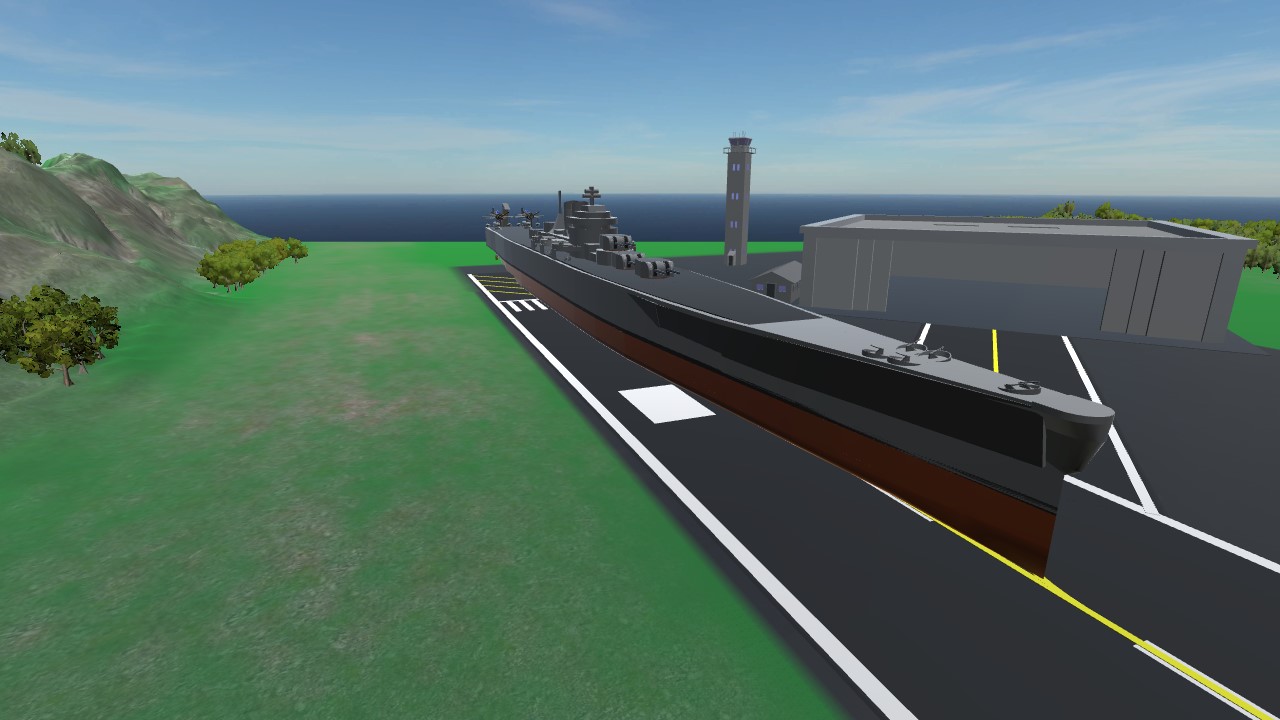
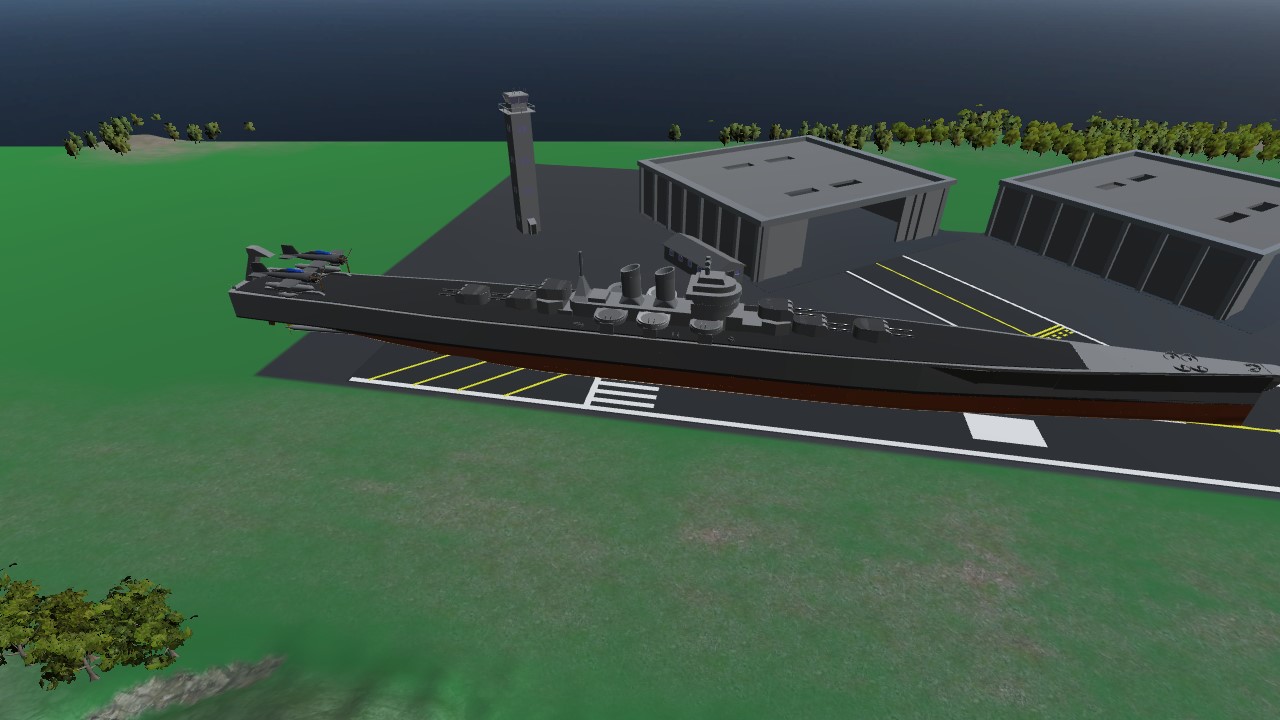
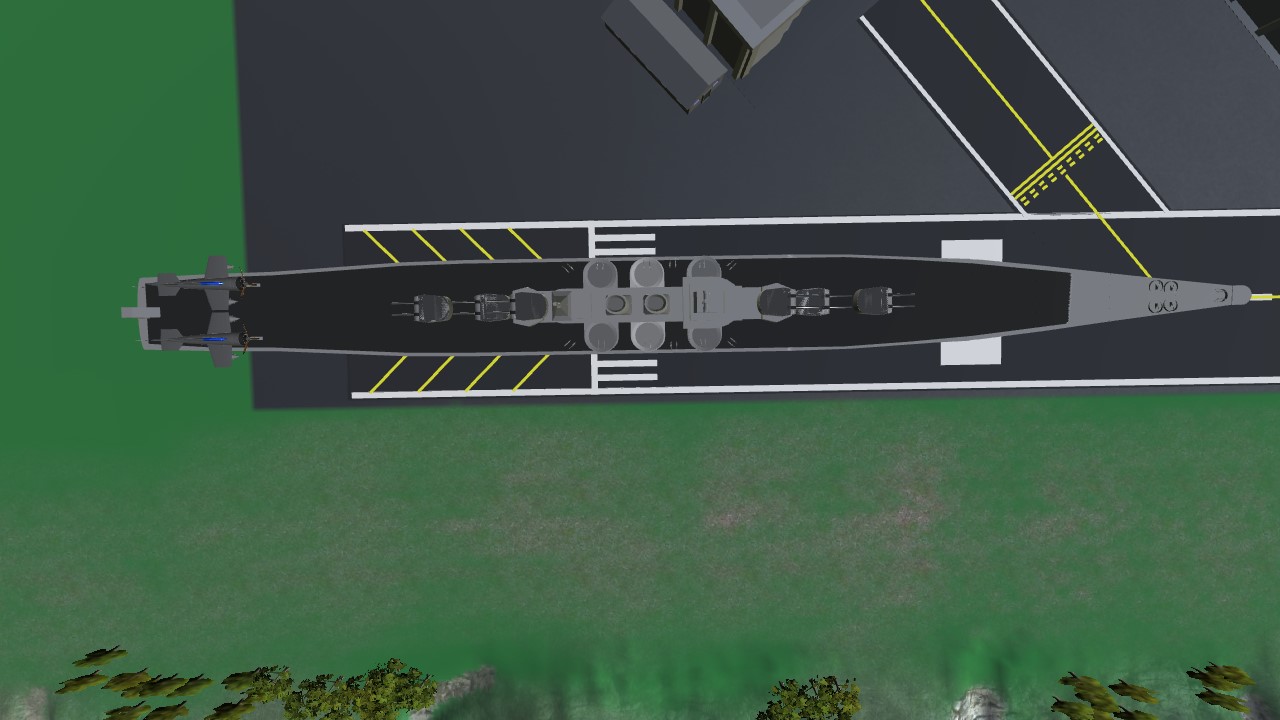


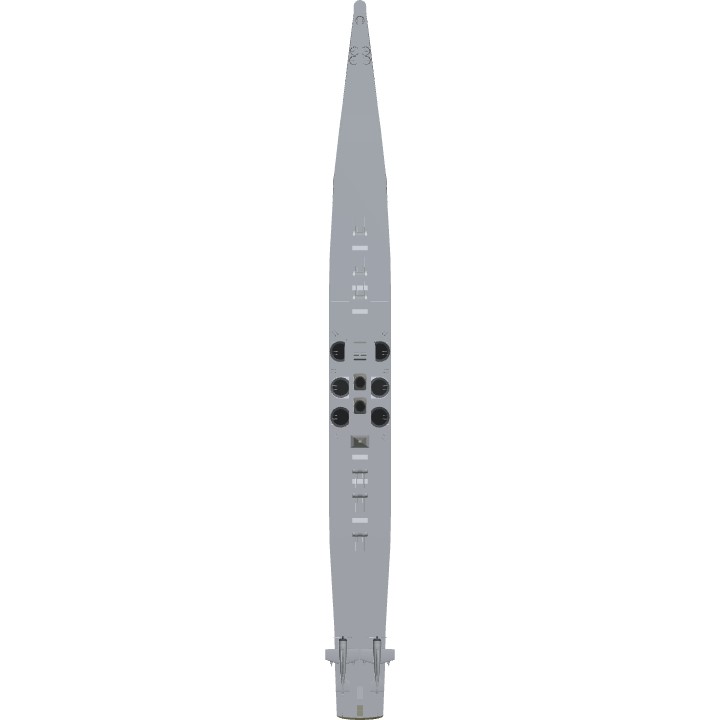
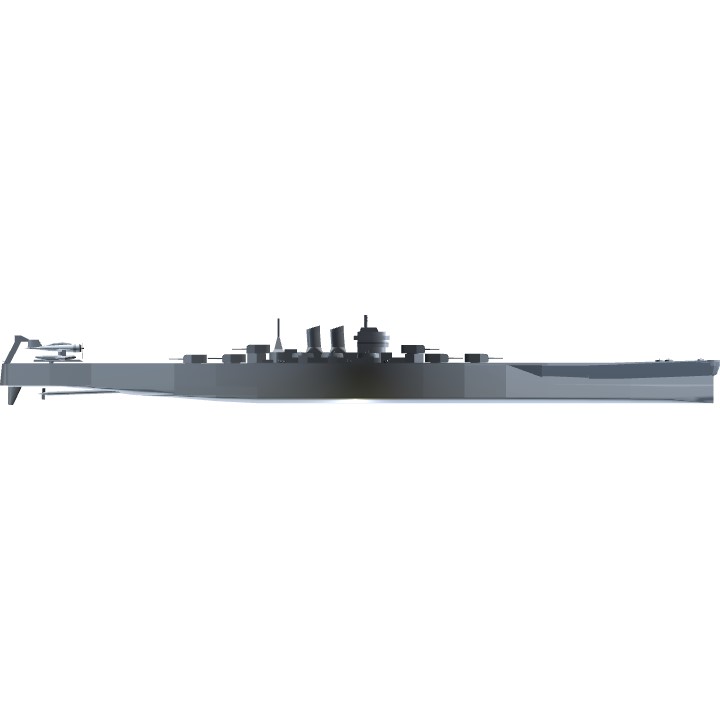
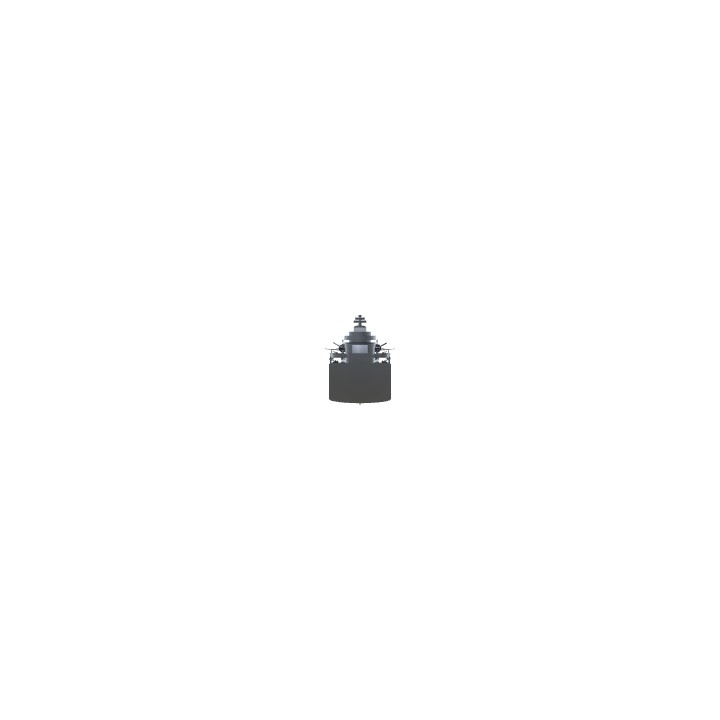
@Pilotmario I can make it, but the ship is rather too big for my phone
@doge np but too bad I can't download it.
Glad u like it @AstonMartin145
Ya the us cruiser bows from ww2-Vietnam and pretty complex @Pilotmario @doge @BlazeInfinity
Hence why I don’t do that type of bow. @BlazeInfinity
i appreciate you making those turrents they look really cool on the ship
I had to re do the rotation and elevation to work with the mod but I realy love it @BlazeInfinity @Pilotmario
@Pilotmario well you don't make WW2 ships. It's too big for my phone anyways
Maybe helping with the bow might help too.
I don’t do that type of bow much. @BlazeInfinity
@Pilotmario hmm? This ship already uses my turrets which I had made specifically for it
Depends on the ship. For this kind of bow, I would recommend getting @BlazeInfinity ‘s help. @doge
How do u make those amazing looking bows on ur ships @Pilotmario
What should lad I do next a BB a CL a CA a DD or Finnish that CV that if o add to much more woeght might just sink
@Awsomur
@doge ok.
If u look those no longer exist this is now my only released version@AstonMartin145
Looks much bette Ethan your previous Worcester. also.....HOLY GOD THAT HISTORY IS LOOOOOOOOOOOONG
Oh and somtimes the battle cam gets deleted in a bug just replace it takes like 4 seconds@Stellarlabs
lol also lots of typing for the desc so it will take a min@Stellarlabs
when a ship is sitting on your runway